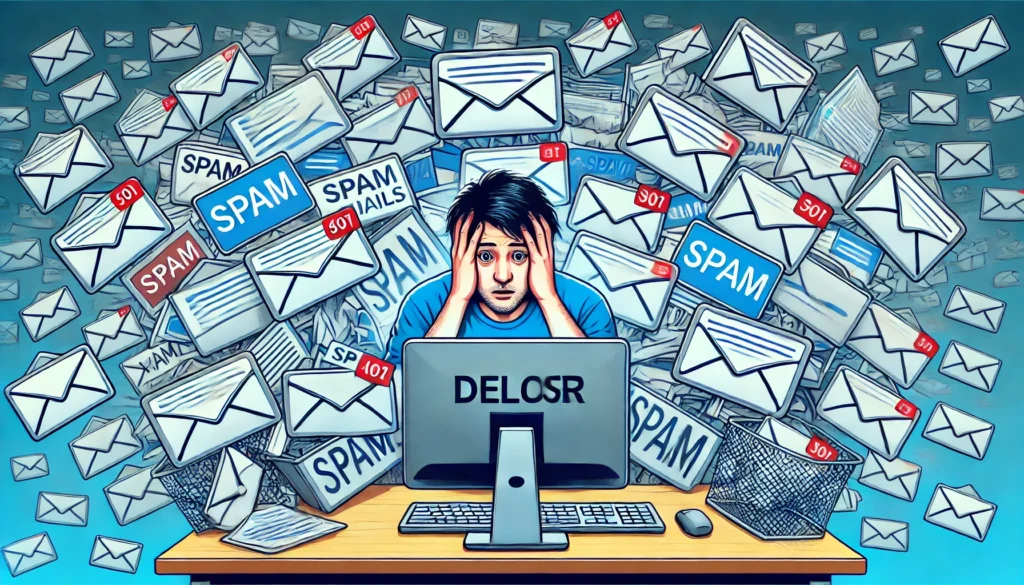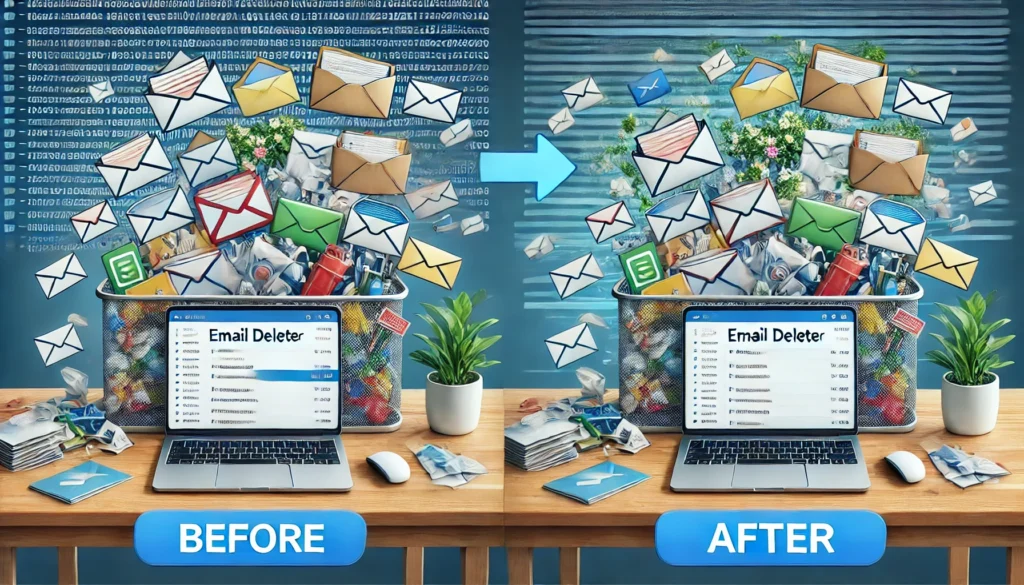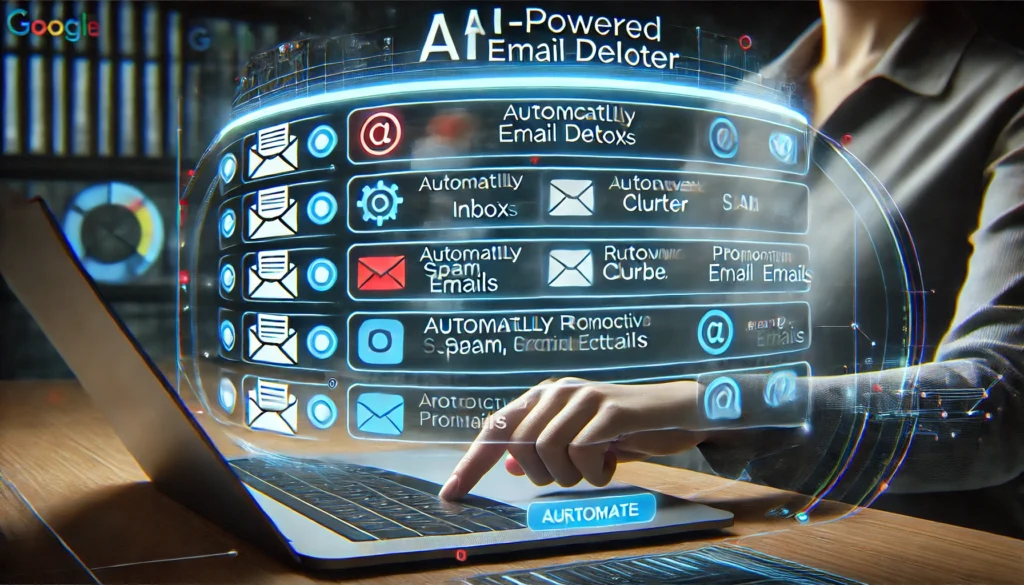Keeping your inbox clutter-free is a vital component of maintaining digital wellness, an often overlooked aspect of our health and wellness routines. In today’s fast-paced digital world, an organized email inbox not only enhances productivity but also promotes mental clarity and reduces stress. The concept of “inbox zero” isn’t just about having an empty inbox; it’s a philosophy that aims to streamline communication, minimize distractions, and encourage more efficient use of time. Whether you’re managing a Gmail inbox or any other mailbox, the strategies outlined in this article will help you achieve and maintain a clutter-free inbox.
You may also like: Top Email Deleters for Inbox Management
The Significance of a Clutter-Free Inbox
Before diving into strategies, it’s essential to understand the significance of maintaining a clutter-free inbox. A disorganized inbox can lead to missed messages, increased stress, and reduced productivity. For health and wellness professionals, clear communication is crucial. An organized inbox allows for better client management, timely responses, and more effective sharing of critical health information.
The Psychological Impact of Clutter
A cluttered inbox can contribute to cognitive overload, making it difficult to prioritize tasks and focus on what’s important. This can lead to feelings of anxiety and stress, impacting mental health. By keeping your inbox organized, you can reduce this cognitive load, allowing for clearer thinking and improved decision-making.
Productivity and Efficiency
An organized inbox enhances productivity by allowing for quick access to important emails and information. When you can easily find what you need, you save time and can focus on more important tasks. Streamlined communication also means that you are less likely to miss important emails, ensuring more efficient management of your responsibilities.
The Importance for Professionals
For professionals, especially those in client-facing roles, maintaining a clutter-free inbox is crucial. It allows for timely and effective communication, which is essential for building and maintaining strong relationships with clients. An organized inbox also reflects professionalism and reliability, key traits in any professional setting.
Historical Context: The Evolution of Email
Email has been an integral part of our lives since the 1970s, evolving from a simple communication tool to a complex digital ecosystem. Over the decades, the volume of emails has increased exponentially, making inbox management more challenging than ever. Understanding the historical evolution of email helps us appreciate its current complexities and the importance of effective management strategies.
From Early Beginnings to Modern Day
Email began as a basic tool for sending messages between computers on the same network. As the internet evolved, email became more sophisticated, allowing for attachments, formatting, and integration with other digital tools. Today, email is a central part of both personal and professional communication, requiring more advanced management techniques.
The Rise of Email Overload
With the growth of the internet, the volume of emails sent and received daily has skyrocketed. This increase has led to email overload, where users are inundated with more messages than they can reasonably manage. Understanding this shift is crucial for developing strategies to manage emails effectively.
Technological Advancements and Their Impact
Advancements in technology have both simplified and complicated email management. Features such as filtering, tagging, and automated responses have made it easier to manage large volumes of email. However, the same technology has also contributed to the increase in spam and unwanted messages, highlighting the need for effective management strategies.
Key Strategies for Achieving Inbox Zero
Achieving inbox zero is not just about having an empty inbox; it’s about establishing habits and systems that allow for efficient email management. Below are key strategies to help you reach and maintain this goal.
Prioritize and Categorize
One of the first steps towards inbox zero is prioritizing and categorizing your emails. Create folders or labels for different types of emails, such as urgent, follow-up, newsletters, and personal. This categorization helps in quickly identifying which emails require immediate attention and which can be addressed later.
Creating Effective Categories
When setting up categories, think about your specific needs and how you typically use email. Common categories include work-related, personal, urgent, and informational. Tailor these categories to suit your lifestyle and work habits, ensuring that they help you streamline your email management.

Leveraging Labels and Tags
Most email clients allow for the use of labels or tags, which can be a powerful tool for email organization. Use these features to mark emails that require follow-up or belong to specific projects. This visual organization method helps you quickly identify and prioritize tasks.
Prioritizing Urgent Communications
Not all emails are created equal. Some require immediate attention, while others can wait. Develop a system to flag or highlight urgent emails so that they are addressed promptly. This prioritization ensures that critical communications are not lost in the shuffle.
Implement Filters and Rules
Most email clients, like Gmail, offer robust filtering options. Set up filters to automatically sort incoming emails based on sender, subject, or keywords. This automation reduces the time spent manually sorting through emails and helps maintain a clutter-free inbox.
Understanding Filter Options
Email filters can be set up to automatically route emails into specific folders or apply labels. Familiarize yourself with the filtering options available in your email client to maximize their effectiveness. Filters can be based on criteria such as sender, subject line, or specific words within the email body.
Automating Routine Tasks
Use filters and rules to automate routine tasks such as archiving old newsletters or categorizing emails from specific senders. This automation reduces manual labor and keeps your inbox organized without constant intervention. It also frees up time for more important tasks.

Customizing Filters for Specific Needs
Different individuals have different email management needs. Customize your filters to address specific challenges you face, such as high volumes of spam or critical communications from specific clients. Tailoring filters to your unique situation enhances their effectiveness and helps maintain organization.
Schedule Email Time
Constantly checking emails throughout the day can disrupt your workflow and increase stress levels. Allocate specific times during the day to check and respond to emails. This scheduling not only improves productivity but also ensures that you are mentally present when addressing emails.
The Benefits of Email Scheduling
Scheduling specific times to check email helps prevent constant distractions and allows you to focus on other tasks. This approach can lead to improved productivity and a more structured workday. By setting boundaries, you can ensure that email management doesn’t overwhelm your schedule.
Morning, Noon, and Night: Finding the Right Times
Finding the right times to check email depends on your personal and professional needs. Some people prefer checking first thing in the morning, while others find midday or evening checks more effective. Experiment with different schedules to find what works best for you.
Maintaining Flexibility
While having a schedule is important, it’s also crucial to remain flexible. There will be days when urgent emails require immediate attention outside of your scheduled times. Be prepared to adjust your routine as needed without letting email management consume your day.
Unsubscribe from Unnecessary Newsletters
Over time, we tend to subscribe to numerous newsletters, many of which we no longer read. Regularly review your subscriptions and unsubscribe from those that do not add value to your life. This simple step can drastically reduce the clutter in your inbox.
Conducting a Subscription Audit
Take time to review your current subscriptions and assess their value. Consider how often you read each newsletter and whether it provides useful information. Unsubscribe from those that no longer serve a purpose, and keep only the ones that add value to your life.
Tools to Manage Subscriptions
Several tools and apps can help manage newsletter subscriptions, allowing you to easily unsubscribe from multiple lists at once. These tools can provide an overview of your current subscriptions, making it easier to identify and eliminate unnecessary clutter.
Maintaining a Lean Subscription List
Once you’ve streamlined your subscriptions, be mindful of new sign-ups. Before subscribing to a new newsletter, consider whether it aligns with your interests and needs. Maintaining a lean subscription list helps prevent future inbox clutter and ensures that you only receive valuable information.
Use the Two-Minute Rule
If an email can be read and responded to in under two minutes, do it immediately. This rule helps prevent the buildup of unread emails and ensures that quick tasks are completed promptly.
Implementing the Two-Minute Rule
The two-minute rule is a simple yet effective strategy for managing small tasks quickly. By addressing short emails immediately, you prevent them from piling up and taking over your inbox. This approach helps maintain a sense of control over your email management.
Balancing Immediate Action with Larger Tasks
While the two-minute rule is helpful, it’s important to balance immediate actions with larger, more time-consuming tasks. Allocate specific times for handling more complex emails, ensuring that they receive the attention they deserve without disrupting your workflow.
Avoiding Procrastination
The two-minute rule helps combat procrastination by encouraging quick actions on manageable tasks. By addressing emails as they come in, you prevent them from becoming overwhelming. This proactive approach helps maintain a clutter-free inbox and reduces stress.
Future Implications of Effective Email Management
As technology continues to evolve, the way we manage our emails will also change. The integration of artificial intelligence in email management is already underway, with smart sorting and automated responses becoming more common. Staying ahead of these trends will ensure that you remain efficient and productive in the digital age.
The Role of AI in Email Management
Artificial intelligence is set to revolutionize how we manage our inboxes. From predictive text to smart categorization, AI tools are designed to enhance our email experience. Embracing these technologies can lead to even more streamlined communication and less clutter.

Predictive Text and Smart Replies
AI-driven tools like predictive text and smart replies are becoming more prevalent in email clients. These features can suggest responses or complete sentences, saving time and effort. By utilizing these tools, you can streamline your email communication and reduce response times.
Intelligent Sorting and Prioritization
AI can automatically sort and prioritize emails based on importance, sender, or content. This intelligent sorting helps ensure that you see the most critical emails first, reducing the risk of missing important communications. Embracing AI-driven sorting can lead to more efficient email management.
The Future of AI in Email
As AI technology continues to advance, we can expect even more sophisticated tools for email management. From advanced spam detection to personalized email organization, AI will play a significant role in shaping the future of digital communication. Staying informed about these developments will help you leverage new technologies effectively.
Balancing Email with Digital Wellness
Maintaining a clutter-free inbox is not just about organization; it’s a crucial aspect of digital wellness. Just as we manage our physical health, managing our digital spaces can lead to a more balanced, stress-free life. By implementing these strategies, you can ensure that your inbox supports rather than hinders your overall well-being.
Practical Advice for Digital Wellness
- Digital Detox: Regularly take breaks from digital devices to recharge mentally. Periodic digital detoxes can help reduce stress and improve overall mental health by allowing you to disconnect from constant digital stimuli.
- Mindful Emailing: Be intentional about the emails you send and receive, ensuring they add value to your life. This mindfulness can lead to more meaningful communication and reduce unnecessary email exchanges.
- Healthy Boundaries: Set boundaries for work-related emails, ensuring they do not encroach on personal time. Establishing clear boundaries helps maintain a work-life balance and prevents email from becoming a source of stress.
The Importance of Setting Boundaries
Setting boundaries around email usage is essential for maintaining digital wellness. By defining when and how you engage with emails, you can prevent them from encroaching on personal time. This balance is crucial for reducing stress and ensuring that email management doesn’t negatively impact your life.
Mindfulness in Email Communication
Approach email communication with mindfulness by considering the necessity and impact of each email. Before sending or responding to an email, assess whether it’s necessary and how it contributes to your goals. This mindful approach can reduce unnecessary emails and promote more meaningful interactions.
Integrating Email Management into a Wellness Routine
Incorporate email management into your broader wellness routine by aligning it with other healthy habits. For example, schedule email checks around your exercise or meditation routine to maintain a balanced approach to digital wellness. This integration can lead to a more harmonious digital and personal life.
Conclusion
Achieving a clutter-free inbox is not a one-time task but an ongoing process. By prioritizing organization, leveraging technology, and maintaining a focus on digital wellness, you can transform your email management practices. This transformation not only enhances productivity but also promotes a healthier, more balanced digital life. Implement these strategies today to take control of your inbox and, by extension, your mental clarity and peace.
Further Reading:
Secure, smart, and easy to use email
Important Note: The information contained in this article is for general informational purposes only, and should not be construed as health or medical advice, nor is it intended to diagnose, prevent, treat, or cure any disease or health condition. Before embarking on any diet, fitness regimen, or program of nutritional supplementation, it is advisable to consult your healthcare professional in order to determine its safety and probable efficacy in terms of your individual state of health.
Regarding Nutritional Supplements Or Other Non-Prescription Health Products: If any nutritional supplements or other non-prescription health products are mentioned in the foregoing article, any claims or statements made about them have not been evaluated by the U.S. Food and Drug Administration, and such nutritional supplements or other health products are not intended to diagnose, treat, cure, or prevent any disease.


